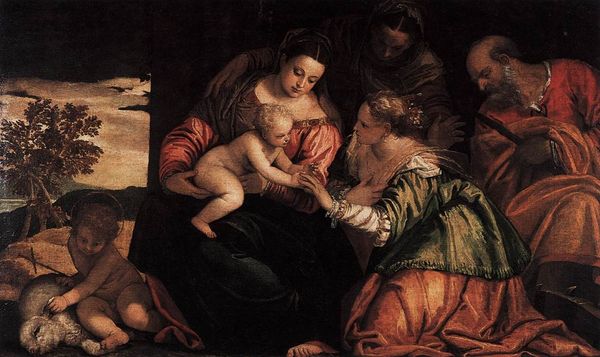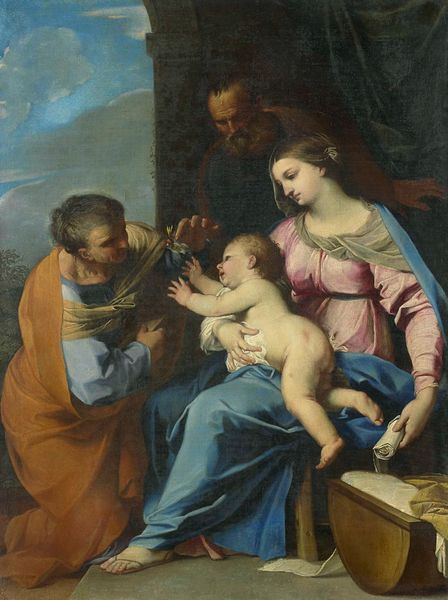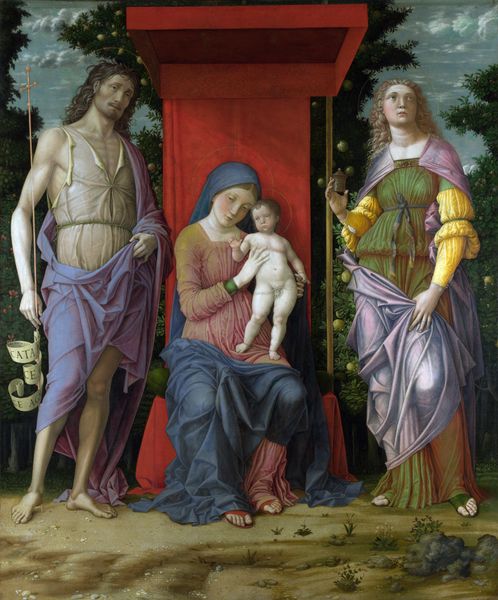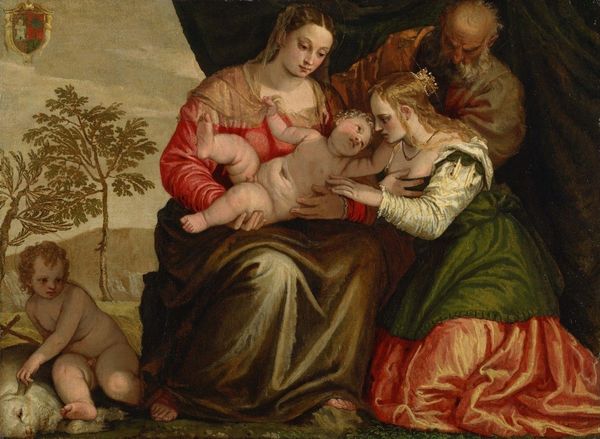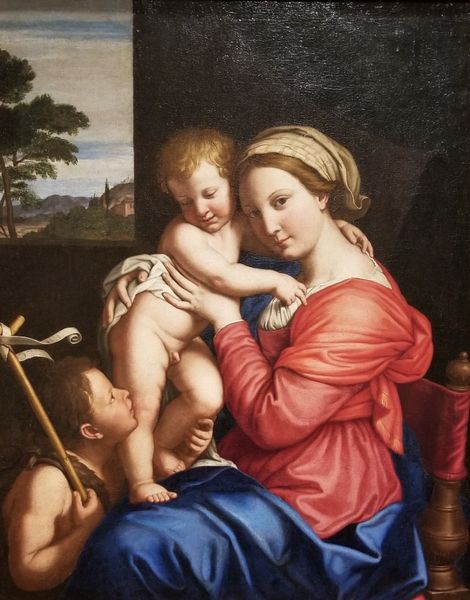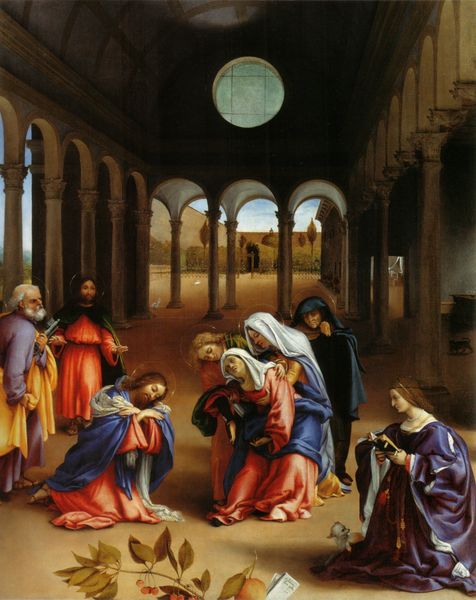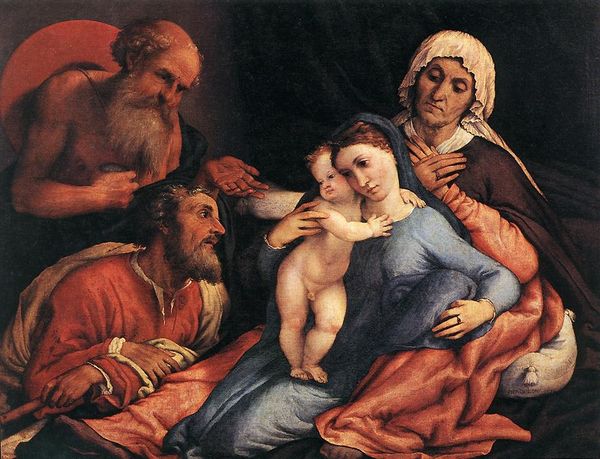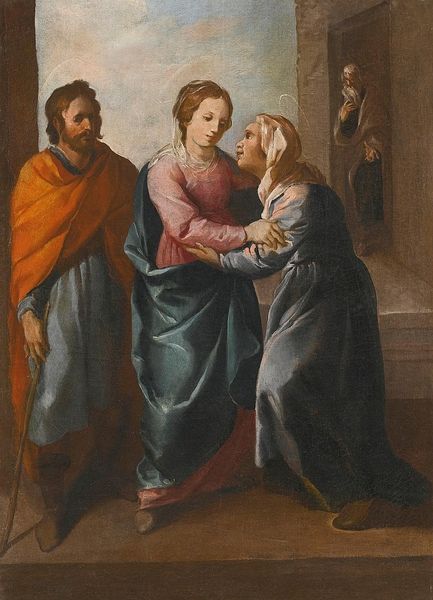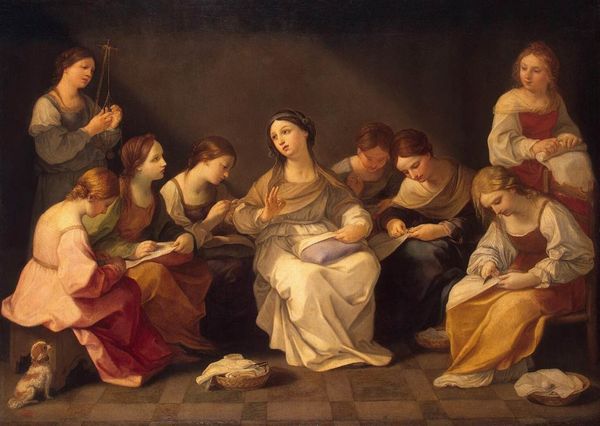
painting, oil-paint
#
portrait
#
baroque
#
painting
#
oil-paint
#
figuration
#
history-painting
#
italian-renaissance
Copyright: Public domain
Curator: Standing before us, we have what's believed to be "The Holy Family with Saints Elizabeth and John" by Nicolas Poussin. It appears to be rendered in oil paint, showcasing a theme of figuration set within an Italian Renaissance context. Editor: Immediately, I'm struck by how serene everyone seems. Like they're posing for a very still family portrait—lots of gravity and implied weight, softened by those delicate pinks and blues in the drapery. Curator: Precisely. Poussin's mastery lies in his calculated composition. Note how he employs a pyramidal structure to anchor the figures, imparting a sense of stability and order, emblematic of the High Renaissance aesthetic. It's like a carefully constructed stage set. Editor: A stage set where maybe the director whispered, "Okay, everyone look thoughtful and just a tiny bit sad." Joseph in the background seems especially pensive; what's he leaning on, a prop or some unfinished construction? Curator: Indeed. The prop hints towards his profession, suggesting his trade and its humble nature. Poussin, a quintessential Classicist, deliberately eschews excessive emotion. Instead, he focuses on conveying universal ideas and moral truths through the arrangement of forms. See how the light illuminates their faces, creating a sense of divine grace. Editor: True, there’s a kind of softened grandeur in how he plays with light and shadow, though some figures seem almost trapped within it, quietly longing to be fully revealed. It’s as if even holy figures have hidden dimensions. But is it just me, or is there something slightly melancholy about that backdrop? Almost looks like prison bars back there, creating shadows... Curator: Well, shadows are part of a picture, and metaphorically, a picture about the world. They are the absence of light and of information but their darkness and obscurity allow us to more greatly value light and to be a tool that allows for spatial reasoning as well. Poussin uses architectural elements not merely as a backdrop but to further accentuate a feeling of enclosure around this holy group. I will admit there are certain implications and questions we can allude to through observation. Editor: A thoughtful observation, actually. He presents us with universal experiences filtered through an unmistakable personal lens. It resonates beyond its ostensible subject matter. Curator: Agreed. Poussin challenges us to consider the enduring power of form to convey complex narratives, and you push to view those very human considerations that Poussin could never resist to express in such carefully constructed and thought provoking form. Editor: What a delightful push and pull— between intention and intuition.
Comments
No comments
Be the first to comment and join the conversation on the ultimate creative platform.

